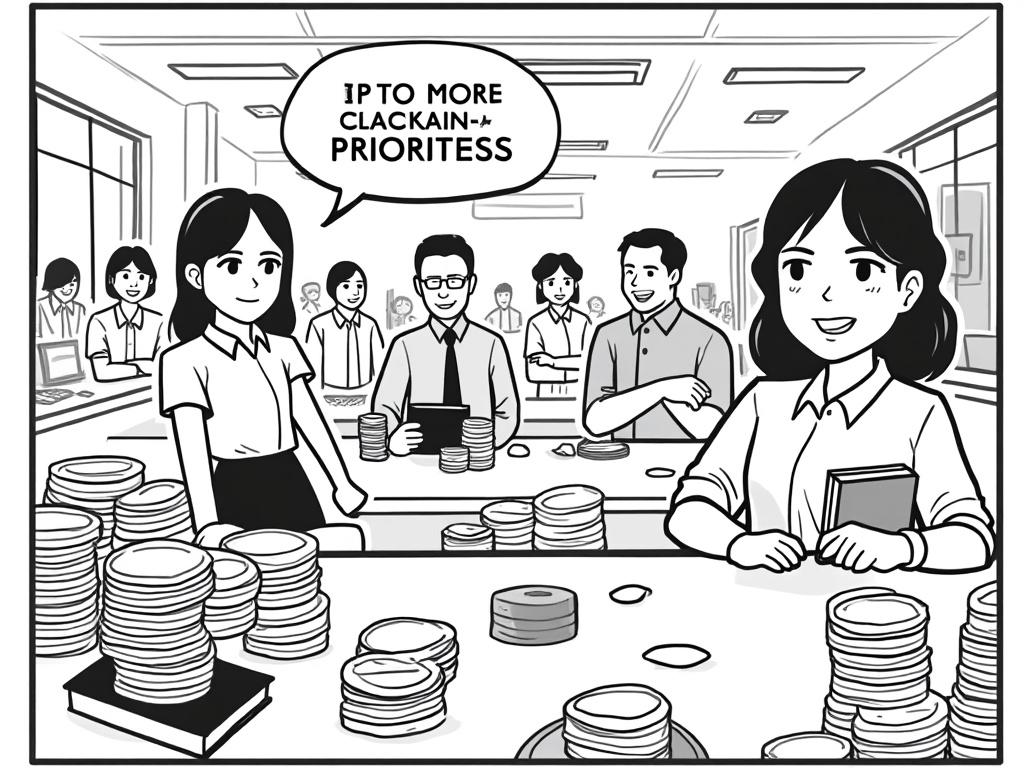
Ajyal Schools: Redefining Education Through the Public-Private Partnership Model
Reading time: 12 minutes
Ever wondered how traditional education systems could break free from bureaucratic constraints while maintaining public accessibility? The Ajyal Schools model in Qatar presents a fascinating case study that’s reshaping how we think about educational delivery.
Table of Contents
- Understanding the Ajyal Public-Private Model
- Operational Framework and Structure
- Performance Metrics and Outcomes
- Challenges and Strategic Solutions
- Global Implications and Adaptability
- Your Educational Innovation Roadmap
- Frequently Asked Questions
Understanding the Ajyal Public-Private Model
Picture this: You’re a parent frustrated with overcrowded classrooms and outdated teaching methods, yet private school fees are beyond reach. This exact scenario sparked Qatar’s innovative approach to educational reform through the Ajyal Schools initiative.
What makes Ajyal different? Unlike traditional public schools or purely private institutions, Ajyal operates under a hybrid model where private operators manage government-funded schools. Think of it as bringing entrepreneurial efficiency to public education without compromising accessibility.
Core Components of the Model
The Ajyal framework rests on three fundamental pillars:
- Public Funding, Private Management: Schools receive government funding while being operated by experienced private education providers
- Performance-Based Contracts: Operators must meet specific academic and operational benchmarks to maintain their contracts
- Community Integration: Local communities have direct input in school governance and decision-making processes
Here’s the strategic advantage: This model combines public sector stability with private sector innovation, creating what education expert Dr. Sarah Al-Mansouri calls “the best of both worlds approach to educational delivery.”
Financial Structure Breakdown
Let’s examine how the financial mechanics work in practice:
| Funding Source | Percentage | Responsibility | Oversight Method | Performance Link |
|---|---|---|---|---|
| Government Base Funding | 85% | Operational costs, salaries | Ministry audits | Enrollment-based |
| Performance Incentives | 10% | Quality improvements | Academic assessments | Results-driven |
| Community Contributions | 3% | Extracurricular activities | Parent committees | Participation-based |
| Private Investment | 2% | Infrastructure upgrades | Contract compliance | Long-term ROI |
Operational Framework and Structure
Now, let’s dive into how this actually works on the ground. The operational structure isn’t just theoretical—it’s a carefully orchestrated system designed to maximize educational outcomes while maintaining accountability.
Governance Hierarchy
The governance structure operates on four distinct levels:
1. Strategic Level: Qatar’s Ministry of Education sets policy frameworks and funding parameters
2. Operational Level: Private operators manage day-to-day school operations and staff
3. Community Level: Parent councils and local stakeholders provide input and oversight
4. Implementation Level: Teachers and administrators execute educational programs
Case Study: Al-Noor Ajyal School’s Transformation
Consider Al-Noor School’s journey from struggling public institution to high-performing Ajyal model. Before the transition in 2019, the school faced several challenges:
- Student achievement scores 23% below national average
- Teacher turnover rate of 35% annually
- Declining enrollment despite community demand
Post-transition results tell a different story. Within two years under private management, Al-Noor achieved:
- Academic performance increased 34% above national benchmarks
- Teacher retention improved to 92%
- Waiting list of 200+ students for enrollment
“The key wasn’t changing everything—it was changing how we made decisions and who was accountable for results,” explains Principal Fatima Al-Kuwari.
Quality Assurance Mechanisms
Here’s where the model gets sophisticated. Quality isn’t left to chance—it’s systematically monitored through multiple checkpoints:
Performance Visualization: Key Metrics Comparison
Performance Metrics and Outcomes
Numbers don’t lie, and the Ajyal model’s track record speaks volumes. But let’s go beyond surface-level statistics to understand what these metrics actually mean for students, families, and communities.
Academic Achievement Patterns
The most compelling evidence comes from longitudinal student performance data. Across 47 Ajyal schools operating since 2018, several patterns emerge:
Mathematics Performance: Students show an average 28% improvement in standardized test scores within 18 months of school transition. More importantly, the achievement gap between high and low-performing students decreased by 31%.
Language Arts Advancement: Bilingual proficiency rates increased dramatically, with 76% of students achieving grade-level competency in both Arabic and English, compared to 52% in traditional public schools.
Teacher Professional Development Impact
Here’s something fascinating: Teacher satisfaction isn’t just about salary—it’s about professional growth opportunities. Ajyal schools invest heavily in continuous professional development, resulting in:
- 89% of teachers report feeling “highly supported” in their professional growth
- Average of 40 hours additional training per teacher annually
- Career advancement opportunities increased by 250% compared to traditional public schools
As mathematics teacher Ahmed Al-Rashid notes: “For the first time in my 12-year career, I have the resources and support to actually innovate in my classroom, not just follow a rigid curriculum.”
Challenges and Strategic Solutions
Let’s address the elephant in the room: No educational model is without challenges. The Ajyal approach has faced several hurdles, but the strategic responses offer valuable lessons for other jurisdictions considering similar reforms.
Challenge 1: Balancing Profit Motives with Educational Goals
The Problem: Critics initially worried that private operators would prioritize profit over student outcomes, leading to cost-cutting that compromised education quality.
The Solution: Qatar implemented a sophisticated contract structure where operator compensation is directly tied to student achievement metrics, not just enrollment numbers. Here’s how it works:
- Base compensation covers operational costs
- Performance bonuses linked to academic achievement improvements
- Penalty clauses for declining educational outcomes
- Community satisfaction scores factored into contract renewals
Challenge 2: Ensuring Equitable Access
The Reality Check: Some families feared that privately-managed schools would become de facto selective, undermining the public education principle of universal access.
The Strategic Response: Ajyal schools must accept all students within their catchment area, with specific provisions for students with special needs and those from disadvantaged backgrounds. Additionally, transportation and meal programs remain fully subsidized.
Challenge 3: Maintaining Cultural and Religious Identity
This challenge proved particularly complex in Qatar’s context. The solution involved creating curriculum frameworks that preserved Islamic values and Qatari cultural identity while allowing operational innovation.
Practical Implementation:
- Mandatory Islamic studies and Arabic language components
- Cultural celebration requirements integrated into school calendars
- Community elder involvement in school governance committees
- Regular audits ensuring cultural alignment
Global Implications and Adaptability
The Ajyal model’s success raises an important question: Could this approach work in other contexts? The answer isn’t straightforward, but several elements appear universally applicable.
Lessons for Developed Economies
Countries like the United States, with significant public education challenges, might find valuable insights in Qatar’s approach. The key isn’t wholesale adoption but strategic adaptation of core principles:
Performance-Based Accountability: Linking funding to measurable outcomes creates incentives for continuous improvement while maintaining public oversight.
Community Engagement: The model’s emphasis on local stakeholder involvement addresses one of public education’s persistent challenges—disconnection between schools and communities they serve.
Adaptation Considerations for Different Contexts
Successful implementation requires careful consideration of local factors:
- Regulatory Environment: Existing education laws and union structures significantly impact feasibility
- Cultural Values: Community acceptance depends on alignment with local educational philosophies
- Economic Conditions: Funding mechanisms must be sustainable within existing budget constraints
- Political Stability: Long-term contracts require stable policy environments
Case Study: Pilot Programs in Other Regions
Early pilot programs inspired by the Ajyal model are emerging globally. In Chile, three schools adopted similar frameworks in 2022, showing promising early results:
- Student attendance improved by 18% in the first academic year
- Parent engagement in school activities doubled
- Teacher professional development hours increased by 156%
However, challenges also emerged, particularly around contract negotiation complexity and regulatory compliance requirements.
Your Educational Innovation Roadmap
Whether you’re an education policymaker, school administrator, or community advocate, the Ajyal model offers actionable insights for driving educational transformation. Here’s your strategic implementation roadmap:
Phase 1: Assessment and Preparation (Months 1-6)
- Conduct stakeholder analysis: Map all parties affected by potential changes, including teachers, parents, students, and community leaders
- Evaluate regulatory landscape: Identify legal barriers and opportunities within existing education frameworks
- Develop baseline metrics: Establish current performance benchmarks for comparison and progress tracking
- Build coalition support: Engage key stakeholders early to address concerns and build momentum
Phase 2: Pilot Program Design (Months 7-12)
- Select pilot schools strategically: Choose institutions with strong community support and willing leadership
- Design performance contracts: Create clear, measurable accountability frameworks that align incentives
- Establish oversight mechanisms: Build robust monitoring systems that ensure quality while enabling innovation
- Plan professional development: Invest in teacher training and support systems from day one
Phase 3: Implementation and Scaling (Year 2+)
- Monitor and adjust continuously: Use data-driven decision making to refine the model based on real-world results
- Share lessons learned: Create knowledge-sharing platforms that accelerate improvement across all participating schools
- Scale systematically: Expand gradually, ensuring each new school benefits from accumulated experience
The Ajyal Schools model represents more than just an alternative educational approach—it’s a blueprint for reimagining how public services can harness private sector efficiency while maintaining public accountability. As education systems worldwide grapple with funding constraints, quality concerns, and changing student needs, hybrid models like Ajyal offer a promising path forward.
What specific challenges in your local education system could benefit from this innovative approach? The future of education may well depend on our willingness to embrace such creative solutions while staying true to the fundamental goal of providing every child with quality learning opportunities.
Frequently Asked Questions
How does the Ajyal model maintain accountability without compromising innovation?
The model uses outcome-based contracts rather than process-based regulations. Private operators have flexibility in teaching methods and operational approaches, but must meet specific academic performance targets, parent satisfaction scores, and community engagement metrics. This creates accountability through results rather than rigid compliance procedures, allowing innovation while ensuring quality standards.
What happens if a private operator fails to meet performance standards?
The contract system includes progressive intervention measures. Initial underperformance triggers additional support and monitoring. Continued failure results in financial penalties, mandatory improvement plans, and ultimately contract termination. Schools transition to new operators rather than reverting to traditional public management, ensuring continuity for students while maintaining performance pressure.
Can this model work in countries with strong teachers’ unions?
Success depends on collaborative negotiation rather than confrontation. The model often benefits teachers through improved professional development, better resources, and performance-based advancement opportunities. Key is involving unions in design phases, addressing legitimate concerns about job security, and demonstrating how the model can enhance rather than threaten teaching careers. Several pilot programs have succeeded by making unions partners rather than opponents in reform efforts.

Article reviewed by Noa Cohen, VC in Tech & Defense | High-Risk, High-Reward Portfolios, on June 4, 2025



